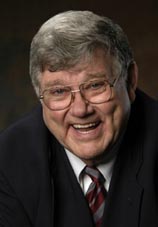|
Writing My Memoirs
Once my teaching route took the road less traveled, I encountered unique offers and opportunities to go further off-trail. In my memoirs I will explain the circumstances under which I taught:
- In "Completely individualized classrooms" teaching from September until June, without ever addressing the entire group. No rule, I just spoke to individuals and never had occasion to speak to the group.
- In regular classes for many years without giving an F to any student on anything, ever. Once I believed the alternative to flunking kids was teaching them—I learned to teach them. The key lies in utilizing the kids responsibility for their own learning
- In a self-imposed goal of teaching a 100% of the kids, 100% of the required material, to 100% proficiency—I don’t always make it; but I always try. Doing so requires complete individualization and democratic relationships for a classroom community of learners. I can’t “teach” at 100% level; but kids can “learn” at that level.
- In a junior high civics class of 527ninth-graders in an auditorium for a year. It was the best class I ever taught primarily because I was terrified of “losing control”. I learned that I couldn’t “control” 527 kids by typical methods such as eye contact, stern looks, threats, pop-quizzes, grades, detention notices, notes to parents, or any other fear and intimidation procedures. I couldn’t control classes of 25 students either, except for the students’ willingness to control themselves in relation to my teaching.
- In a Completely individualized math class of 93 seventh graders, in a modified three-room sized classroom. I put the final exam from last year’s class on the board, as the goal. I made available materials including self-scored diagnostic tests, and gave the freedom to work together and at their own speed. I worked only with individual students. Students who accepted the goal were eager to utilize any resource. My job was mainly to assist the others in accepting the goal.
- In a "wild, innovative school” where teaching teams eliminated the halls, walls, bells, classes, grades, report cards, textbooks, schedules, and curriculum. The junior high used a teacher-controlled, variable, flexible schedule that changed daily. The school was completely individualized with students having responsibility for their own schedules, plans, progress, and learning.
- In a school district with 10,000 teachers, in a district with 300 teachers, and districts in-between. Within those districts, I taught in schools that ranged from a stereotype “ghetto” school to the “best school”, where the average student was two years above grade level and 95% went on to college. The sixth largest district in the U.S. used a policy book a foot and a half thick. I had to make a crucial decision. If I followed policy, I couldn’t teach; if I taught, I couldn’t follow policy. I succeeded by learning to out-bureaucrat the bureaucrats, using their rules against them.
- In a federal research project I taught the lowest level students on the premise: “The kids achievement problem isn't because of what's wrong with them; it's what the school is doing to them.” Subsequently, I taught 32 teachers to replicate the program in sixteen “ghetto type” schools. I continued teaching teachers the methods for years.
- In demonstration classes at The Kennedy Child Study Center for a joint project for Peabody College, Metropolitan Nashville Schools, Model Cities Project, and Central Midwest Regional Educational Laboratory—(CEMREL). From eight schools, using two teachers as a team to teach the 60 “bottom students” in their respective junior high, middle, and elementary schools, I took the most difficult kids in a two-way mirrored classroom to demonstrate defective teaching-learning procedures.
- In summer Courses for the University of California, Extensions at San Diego, Irvine, Riverside, Santa Barbara, and Davis for 27 years consecutive years. My specialty was teaching teachers to individualize classes, shift their roles from taskmasters to resources, and shift from teacher-centered instruction to child-centered learning. I taught fourteen different three-credit courses including, “Getting the Kids to Make Their Own Materials”, “The Creative Classroom”, and “Mastery Learning”.
- In special education classes ranging from “trainable mentally retarded” in a sheltered workshop, to learning disabled, and groupings of at-risk kids, designated as the “kids at the bottom of the achievement gap”, or “the kids who can’t, don’t or won’t even try to learn, follow procedures or behave.”
- In three independent psychological services organization doing private tutoring in individual subjects and in training tutors. My approach dealt with student attitude, teacher attitude, student-teacher relationship, and students taking their own responsibility—all as keys to remediation. My relationship to the tutee was the model.
- In setting up and supervising an entire K-6 elementary school on ungraded, open concepts.
- In a psychiatric hospital for a year and a half.
Article continued on next page


 » More Gazette articles... » More Gazette articles...



|

About Bill Page ...

 Bill Page, a farm boy, graduated from a one-room school. He forged a career in the classroom teaching middle school “troublemakers.” For the past 26 years, in addition to his classroom duties, he has taught teachers across the nation to teach the lowest achieving students successfully with his proven premise, “Failure is the choice and fault of schools, not the students.”
Bill Page, a farm boy, graduated from a one-room school. He forged a career in the classroom teaching middle school “troublemakers.” For the past 26 years, in addition to his classroom duties, he has taught teachers across the nation to teach the lowest achieving students successfully with his proven premise, “Failure is the choice and fault of schools, not the students.”
Bill Page is a classroom teacher. For 46 years, he has patrolled the halls, responded to the bells, and struggled with innovations. He has had his share of lunchroom duty, bus duty, and playground duty. For the past four years, Bill, who is now in his 50th year as a teacher, is also a full time writer. His book, At-Risk Students is available on Abebooks, Amazon, R.D. Dunn Publishing, and on Bill’s web site: http://www.teacherteacher.com/
In At-Risk Students, Page discusses problems facing failing students, “who can’t, don’t and won’t learn or cooperate.” “The solution,” he states, “is for teachers to recognize and accept student misbehavior as defense mechanisms used to hide embarrassment and incompetence, and to deal with causes rather than symptoms. By entering into a democratic, participatory relationship, where students assume responsibility for their own learning.” Through 30 vignettes, the book helps teachers see failing students through his eyes as a fellow teacher, whose classroom success with at-risk students made him a premier teacher-speaker in school districts across America.

|

Bill Page Articles on Teachers.Net...
- Parents Are Recruits, Teachers Are Responsible, Kids Are Victims, and Schools Are Culpable For At-Risk Problems (June 2009)
- Teaching Is... (May 2009)
- At Risk Students: Victims of Miseducation and Failure (Apr. 2009)
- Fifty Years of Teaching (Mar. 2009)
- Teacher Study Groups: Taking the “Risk” out of “At-Risk” (Feb. 2009)
- Thoughts on the Use of Failure as a Teaching Technique (Jan. 2009)
- At-Risk Students: A Point of Viewing (Dec. 2008)
- Labels Are For the Jelly Jar (Nov. 2008)
- Curriculum Happens (Oct. 2008)
- Notes And Quotes From My Summer Reading (Sept. 2008)
- Responsibility Equals Participation (Aug. 2008)
- When Is Student Failure The Teacher’s Fault (July 2008)
- A Great Model Of Differentiation (June 2008)
- Two Teachers, Two Philosophies, One Result (May 2008)
- The Silenced Majority (April 2008)
- Your Students Are Watching, Listening, and Learning (Mar 2008)
- Bureaucrat's Field of Dreams: If You Test Them They Will Learn -- A Rousing, Rip-Roaring,Raving Rant (Apr 2003)
- If We Want… (Jan 2003)
- We Get What We Get (Dec 2002)
- A Remarkable Program For At-Risk, Middle Level Students (Dec 2002)
- Teacher Classroom Control Means Student Self-Control (Nov 2002)
- Relational Discipline (Sep 2002)
- Teachers Are Individuals Too (Sep 2002)
- Classroom Rules??? (Aug 2002)
- Learning Your Students' Names: Fun, Fast, Easy and Important (Aug 2002)
- Making 2002-2003 The Best Year Ever (Aug 2002)
- Using The Summer To Improve Your Teaching (July 2002)
- What I Know I Know (July 2002)
- We Have Achieved Education For All...Now We Seek Education for Each (June 2002)
- Improving Classroom Grading Procedures (May 2002)
- Teaching: An Awesome Responsibility (May 2002)
- The Teacher is the Difference (May 2002)
- Take a Seat at the Bottom of the Class (Apr 2002)
- Swinging on the Education Pendulum (Mar 2002)
- Remediation Doesn't Work (Feb 2002)
- Teaching Is... (Jan 2002)
|

|
Related Resources & Discussions on Teachers.Net...
|
|




 Bill Page, a farm boy, graduated from a one-room school. He forged a career in the classroom teaching middle school “troublemakers.” For the past 26 years, in addition to his classroom duties, he has taught teachers across the nation to teach the lowest achieving students successfully with his proven premise, “Failure is the choice and fault of schools, not the students.”
Bill Page, a farm boy, graduated from a one-room school. He forged a career in the classroom teaching middle school “troublemakers.” For the past 26 years, in addition to his classroom duties, he has taught teachers across the nation to teach the lowest achieving students successfully with his proven premise, “Failure is the choice and fault of schools, not the students.”